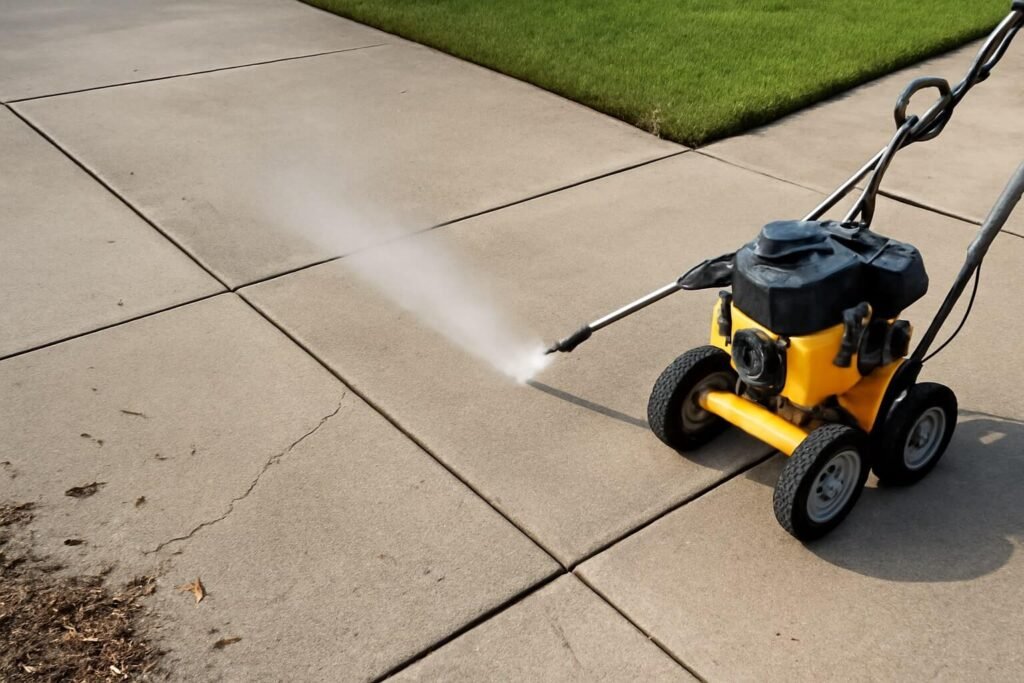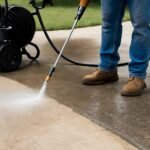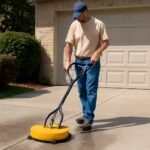Concrete driveways are an essential part of any home’s exterior, providing functionality and curb appeal. However, they endure harsh weather conditions throughout the year that can cause cracks, stains, and deterioration if left untreated. By following a Seasonal Concrete Driveway Maintenance Checklist, homeowners can extend the life of their driveways and avoid costly repairs. This comprehensive guide will walk you through the ultimate 15-step checklist designed to maintain your concrete driveway in all seasons.
Why Regular Concrete Driveway Maintenance Matters
Regular maintenance of your concrete driveway isn’t just about aesthetics; it plays a vital role in preserving its strength and functionality. Without proper care, your driveway may suffer from premature cracks, scaling, and other forms of damage that compromise its integrity.
Maintaining your driveway has several benefits:
- Extends durability: Timely repairs and sealing protect the concrete from water infiltration and freeze-thaw damage.
- Enhances curb appeal: A well-maintained driveway boosts your home’s overall look and can increase property value.
- Saves money: Preventing damage through routine care reduces the need for expensive replacements or extensive repairs.
By understanding and acting on seasonal care requirements, you keep your driveway safe and attractive for years.
Understanding Concrete Driveway Issues by Season
Concrete reacts differently to various weather conditions. Recognising seasonal challenges helps you take targeted actions for prevention and repair.
Common Winter Problems for Concrete Driveways
Winter is often the toughest time for concrete due to:
- Freeze-thaw cycles: Water seeping into cracks freezes and expands, causing further cracking and spalling.
- Salt and deicing chemical damage: These substances can corrode concrete surfaces, leading to surface scaling.
- Snow and ice buildup: Heavy snow and improper snow removal can stress the surface.
Spring Cleanup and Repairs
Springtime offers a great opportunity to:
- Remove debris and dirt accumulated over winter.
- Inspect and repair cracks before warmer weather sets in.
- Prepare the surface for sealing and protection.
Summer Maintenance Tips
Summer heat and UV rays can cause surface drying and minor cracking. Focus on:
- Applying a protective sealant.
- Keeping the driveway clean and free from stains.
- Avoiding heavy loads that stress the concrete.
Fall Inspection and Prevention
Fall is crucial for prepping your driveway for the upcoming winter. Steps include:
- Clearing leaves and organic debris.
- Inspecting for new cracks or damage.
- Sealing or resealing to protect against moisture.
The Ultimate 15-Step Seasonal Concrete Driveway Maintenance Checklist
This step-by-step checklist ensures you cover all critical areas throughout the year to maintain your concrete driveway effectively.
Step 1: Clear Debris Thoroughly
Start by removing leaves, dirt, and other debris using a broom or blower. For stubborn grime, a pressure washer can help clean the surface deeply without causing damage.
Step 2: Inspect for Cracks and Damage
Carefully examine the driveway for cracks, spalling, or discoloration. Note crack widths — small hairline cracks can be repaired easily, but wider cracks might require professional attention.
Step 3: Clean Oil and Stain Spots
Oil
Step 4: Apply Concrete Cleaner
A thorough cleaning with a concrete cleaner prepares the surface for sealing. Choose a product suitable for your driveway and follow the manufacturer’s instructions for the best results.
Step 5: Repair Minor Cracks
Use crack filler or concrete patch compounds to fix small cracks. This prevents water from seeping in and causing further damage during freeze-thaw cycles.
Step 6: Patch Larger Damages
For larger damaged areas, apply patching compounds designed for concrete. If damage is extensive, hiring a professional can ensure a durable repair.
Step 7: Seal the Driveway
Sealants protect the driveway from water, stains, and UV damage. Choose a high-quality sealant and apply it according to the season—spring or early fall is ideal.
Step 8: Control Water Drainage
Ensure your driveway has proper drainage to prevent standing water. Check slopes and gutters to direct water away from the concrete surface.
Step 9: Avoid Using Deicing Chemicals Excessively
While necessary in winter, excessive use of salt or chemicals can harm concrete. Opt for safer alternatives like sand or kitty litter for traction.
Step 10: Maintain Expansion Joints
Expansion joints absorb temperature-related movement. Keep them clean and intact to avoid cracks forming adjacent to joints.
Step 11: Protect from Heavy Loads
Limit the parking of heavy vehicles on your driveway, especially during extreme weather conditions, to prevent structural damage.
Step 12: Regular Cleaning Schedule
Establish a regular cleaning routine—sweeping weekly and washing as needed—to prevent the buildup of damaging debris and stains.
Step 13: Address Surface Scaling
Scaling is surface flaking caused by freeze-thaw or poor finishing. Early treatment involves cleaning and applying sealants designed for scaling prevention.
Step 14: Winter Preparation
Prepare your driveway for winter by clearing it of debris, sealing cracks, and using protective covers if necessary. Remove snow carefully to avoid surface damage.
Step 15: Professional Inspection
Schedule professional inspections every few years or when you notice persistent problems. Experts can identify underlying issues and recommend appropriate repairs.
Frequently Asked Questions (FAQs)
How often should I seal my concrete driveway?
Can I repair concrete cracks myself?
What is the best time of year for driveway maintenance?
Are all deicing salts bad for concrete?
How can I prevent oil stains on my driveway?
When should I consider replacing my concrete driveway?
Conclusion: Keeping Your Concrete Driveway Strong Year-Round
Maintaining your concrete driveway through every season ensures long-lasting durability and preserves your home’s curb appeal. By following this Seasonal Concrete Driveway Maintenance Checklist, you can prevent costly repairs and enjoy a strong, beautiful driveway for years to come. Remember, consistent care, timely repairs, and professional inspections are key to success.



